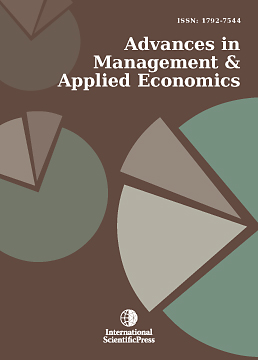Advances in Management and Applied Economics
Sources of China’s Economic Growth: A Case for Green Accounting
-
 [ Download ]
[ Download ]
- Times downloaded: 10287
Abstract
Based on the Solow growth model and the concept of sustainable development, we decomposed the sources of China’s economic growth into total factor productivity, physical capital, human capital, energy consumption and the environmental loss, utilizing data 1981-2012 in China. The contribution of each of the five aspects on China’s economic growth and the impact on China’s economic growth fluctuations were measured, and results revealed that investment in physical capital is the main driving force for China's economic growth at the present stage. The energy consumption accounts for 24.8% of China’s economic growth. The economic growth rate related to the environment is -1.14%, showing that environmental loss has become an obstacle to economic growth in China. Economic growth fluctuations and TFP fluctuations also showed a more consistent trend. As a whole, China’s economy presents an extensive development, characterized by "high input, high consumption, high emission and low efficiency". Therefore, the key for China to achieve sustainable economic development is changing their economic growth model and impelling total factor productivity to be the main motivating force and source, instead of physical capital and energy consumption.
JEL classification numbers: 011Keywords: Sources of economic growth, total factor productivity, human capital stock, resources restriction, environmental restriction
